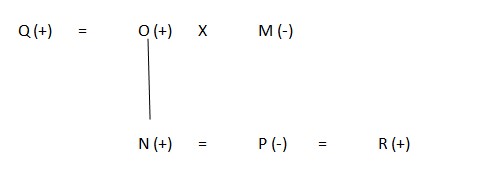Question
All the six members of a family M, N, O, P, Q and R. N
is the son of O but O is not the mother of N. M and O are a married couple. Q is the brother of O. P is the daughter of M. R is the brother of N. Who is the mother of N?Solution

Anil scored 40% marks and fell short of passing marks by 80, while Sunita scored 70% marks, which was 100 more than the passing marks. Find the total ma...
A fruit contains 80% water when fresh, and 40% water when dried. How many kilograms of the fresh fruit are needed to make 2 kg of dried fruit?
Two students appeared in an exam and one secured 12 marks more than the other. If marks of student who got more marks is 54% of the sum of the marks of ...
In an exam, Sunil scored 45% marks and failed by 18 marks while Rina scored 90% marks and scored 72 marks more than the passing marks. Find out the pass...
From the salary of a software engineer, if 15% is used as house rent, 25% of the remaining is spent on household items, 25% of the remaining as income t...
Out of the total income of Amit, he spends 40% on food, 25% on rent and 20% on groceries. Out of the remaining income, he donates 15% in a charity and s...
If 66.66% of ‘t’ equals 6 times 25% of ‘u’ and ‘t’ is 70% of 450, find the value of ‘u’.
Out of 520 students in school, 30% students like samosa only and 40% students like samosa and momos both. If 20% students don’t like any snacks then f...
A Fruit seller purchased 1530 bananas at the rate of Rs. 20 per dozen. 90 bananas get rotten. In order to make a 20%, he must sell the remaining bananas...
Meenu spent 15% of the salary on entertainment and 15% on makeup. She spent 20% of the remaining on the food and 50% of the remaining invested in mutual...
Relevant for Exams:


